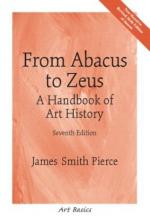|
This section contains 555 words (approx. 2 pages at 300 words per page) |

|
The abacus is an ancient calculating machine. This simple apparatus is about 5,000 years old and is thought to have originated in Babylon. As the concepts of zero and Arabic number notation became widespread, basic math functions became simpler, and the use of the abacus diminished. Most of the world employs adding machines, calculators, and computers for mathematical calculations, but today Japan, China, the Middle East, and Russia still use the abacus, and school children in these countries are often taught to use the abacus. In China, the abacus is called a suan pan, meaning counting tray. In Japan the abacus is called a soroban. The Japanese have yearly examinations and competitions in computations on the soroban.
Before the invention of counting machines, people used their fingers and toes, made marks in mud or sand, put notches in bones and wood, or used stones to count, calculate, and keep...
|
This section contains 555 words (approx. 2 pages at 300 words per page) |

|


